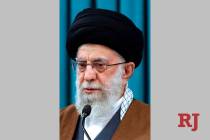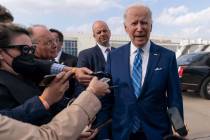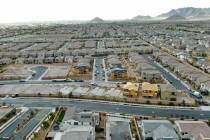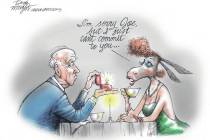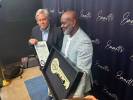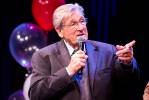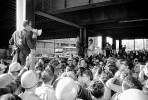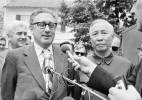A positive Las Vegas story
I was eating lunch Monday at Chicago Hot Dogs on Rancho Drive when a woman sitting near me struck up a conversation with some people who had just given their order. She said her employer transferred her to Las Vegas three years ago, she doesn't like it here and wants to move back to Chicago.
There's "nothing to do" in Las Vegas, she said. In Chicago, she explained, there are lots of great places to go. Among other things, she cited the aquarium, the natural history museum and Grant Park, which is always hosting some kind of event. Las Vegas has no culture, she said. Members of the other group seemed to agree with the garrulous woman's verdict.
The word "culture" means different things to different people. But one thing many people seem to agree on is there isn't much of it in Las Vegas.
This is a matter of perspective, of course. If you count the range of entertainments on the Strip, it would be difficult to argue that Las Vegas is a cultural wasteland. But what if you take away the Strip, which is geared toward tourists and which many locals can't afford and don't like to go to? What's left?
If you look at it that way, the Chicago admirer has a point.
Fast forward to Wednesday evening. I'm sitting in the auditorium at the Fifth Street School, the city's elegant downtown cultural complex. The four men on the stage constitute the brain trust of the Smith Center for the Performing Arts, under construction a few blocks away.
The men, led by longtime local business leader Don Snyder, have, in effect, dedicated the next few years of their lives to answering the ex-Chicagoan's critique of Las Vegas. They are building a half-billion-dollar facility that's likely to have a transformative effect on downtown and the entire community.
"Before you know it, no one will be able to remember what Las Vegas was like before the performing arts center," said Paul Beard, the vice president and chief operating officer.
Beard has seen it happen twice before, in West Palm Beach, Fla., and Fort Worth, Texas. In each case, the opening of a performing arts center in a neglected part of town spawned new development around it.
When a performing arts center opened in Orange County, Calif., it generated the same kind of economic revival, said Rick Johnson, the Smith Center's vice president and chief financial officer, who was involved in the Orange County project.
The Smith Center is creating hundreds of construction jobs now, and when it opens in early 2012, it will employ 350 to 400 people. It, along with the Cleveland Clinic Lou Ruvo Center for Brain Health, are the catalysts for the eventual buildout of Symphony Park -- the old Union Pacific railyard.
But that doesn't answer the Chicago woman's complaint. The answer will come with the quantity and diversity of performances at the Smith Center. In the first year of operation, about 150 performances will be scheduled, Beard said. There will be music, theater, dance, lectures and things that don't fit into a neat category. In ensuing years, the number of performances could increase to as many as 300.
That's an infusion of culture the likes of which Las Vegas has never seen.
One might note that Las Vegas already has several excellent performance venues on the Strip. But there are two main drawbacks. The first is that the casinos' primary goal is to bring in shows that will draw the most people at the highest ticket prices. The Smith Center will present shows of one kind or another that would never otherwise make their way to Las Vegas.
The second advantage the Smith Center has over the casino venues is it will be educating students in the arts. The facility will be constantly full of kids learning, rehearsing and performing. The casinos certainly can't be expected to make this sort of contribution to the community.
Unlike the short life span of a hotel-casino, the Smith Center, inspired by Europe's stately performance venues, is being built to last 150 to 200 years. This will be the case not only because of its sturdy construction but because of the timeless quality of the architecture and design.
"It will rival any of the great halls of the world," said Snyder, who visited 15 of them as part of the research for the Smith Center's design.
The Las Vegas area has almost 2 million people. By any measure, it should have had a nice performing arts center 20 years ago. But the city's cultural growth has been stunted by its fundamental need to satisfy the desires of visitors.
The Smith Center, along with the Springs Preserve and a few other institutions, represents a departure from that historical focus. It's a recognition that serving the needs of residents is also very important.
When the Smith Center opens, Las Vegas won't be done, not by a long shot. The ex-Chicagoan still could complain about the absence of some other cultural institutions. But in the Smith Center's energizing wake, they will come.
Geoff Schumacher (gschumacher@reviewjournal.com) is the Review-Journal's director of community publications and publisher of Las Vegas CityLife, which co-sponsors the Symphony Park lecture series. His column appears Friday.











